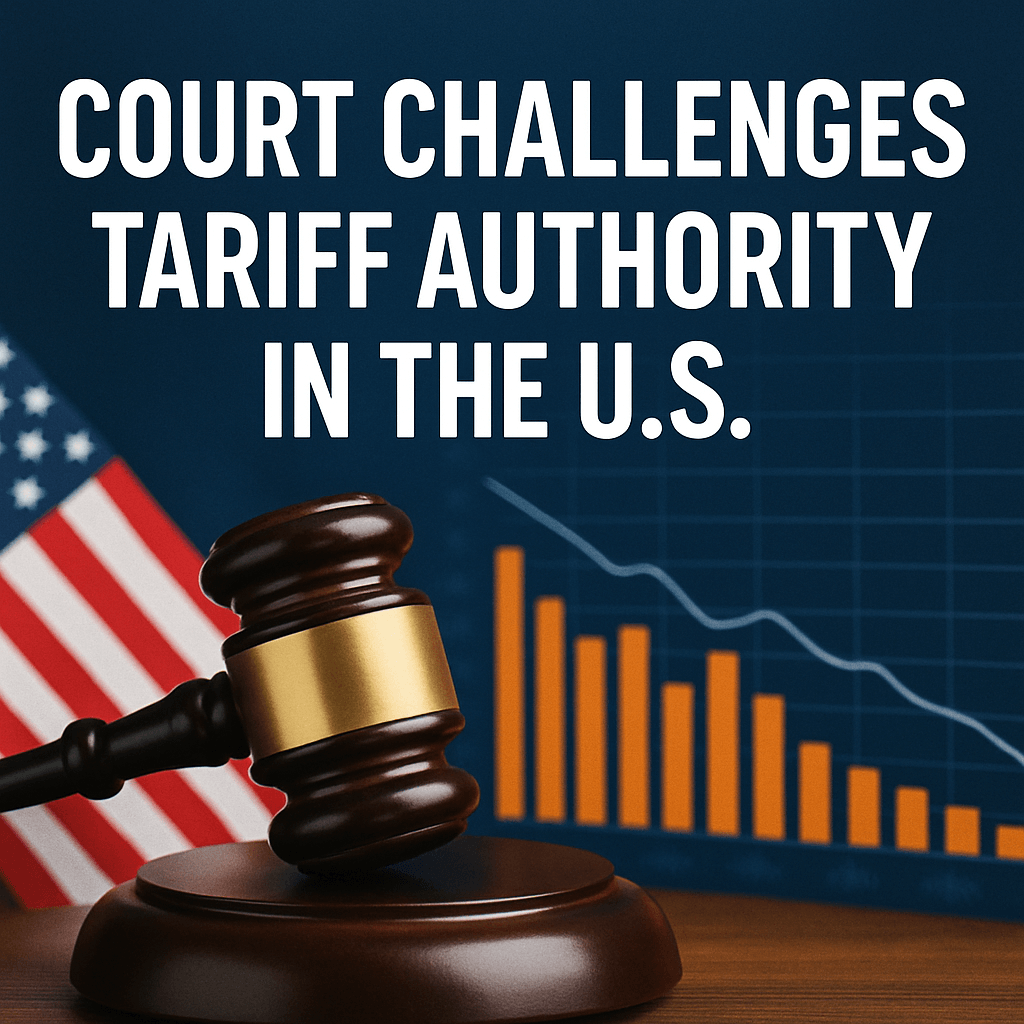Court Challenges Tariff Authority in the U.S.

Last Friday, I walked out of a grocery store shaking my head as I saw a staple I frequently purchase—a bottle of Italian table wine—had jumped from $18 to $27, illustrating how inflation and shifting supply and demand dynamics affect everyday prices. Such experiences are becoming increasingly common for American consumers, raising alarms about the impact of proposed tariffs by former President Donald Trump. Tariffs on imports threaten to increase the cost of everyday goods and disrupt financial planning for countless households.
The Broader Economic Context
Major retailers, including Walmart and Best Buy, along with car manufacturers like Ford and Subaru, have expressed concerns about price hikes due to the uncertainty surrounding these tariffs. This ripple effect of potential price increases extends to a wide array of products—from electronics to essential household items—further straining consumer budgets.
However, in a surprising turn of events, a somewhat obscure judicial body may have altered the landscape of Trump’s tariff agenda. This entity, known as the U.S. Court of International Trade (CIT), recently issued a ruling that has significant implications for the legal grounding of Trump’s tariffs.
Understanding the U.S. Court of International Trade
The CIT was established by Congress in 1980 to address issues related to international trade and customs disputes. Headquartered in New York, the court handles cases that can have far-reaching consequences for trade policy.
In a unanimous ruling, the CIT declared that former President Trump had overstepped the bounds of his authority under the International Emergency Economic Powers Act (IEEPA), a law originally enacted in 1977 to allow the president to manage trade and transactions during national emergencies. Trump’s administration employed the IEEPA to justify imposing a range of tariffs by labeling the country’s trade imbalance as a national emergency.
Legal Dynamics and Implications
Critics, including various states and legal scholars, contested this interpretation, arguing trade deficits are a long-standing issue that do not inherently constitute a national emergency. They asserted that such taxation cannot be rightfully implemented without Congressional approval, as mandated by the Constitution.
The case brought before the CIT was filed by V.O.S. Selections, a small wine importer, alongside four other small businesses. These plaintiffs contended that Trump’s tariffs, particularly on foreign wines, exceeded his legal authority outlined by the IEEPA.
The court’s ruling was influenced by historical precedent, notably the 1971 case of U.S. v. Yoshida International, wherein a similar use of executive power by President Nixon was upheld. Trump’s legal team referenced this case as justification for their tariff measures; however, the CIT judges exhibited skepticism about granting any president unlimited tariff authority.
Major Rulings and Their Impact
The CIT’s recent decision effectively annuls Trump’s executive orders imposing significant tariffs—namely, a 25% duty on goods from Canada and Mexico, a 20% levy on Chinese imports, and a general 10% tariff on a variety of sources. Additionally, tariffs proposed to take effect on July 9 for over 60 trading partners were also nullified.
This ruling represents a significant setback for Trump’s trade policy, which had aimed at correcting perceived injustices in the global trading system. However, the outcome does not mark the end of trade disputes. Trump’s administration had utilized other authorities outside of the IEEPA to impose tariffs on essential industries such as steel and aluminum, leaving room for ongoing tension in trade relations.
The Economic Uncertainty Continues
While tariffs can serve as tools for protecting domestic industries and enhancing negotiating power, erratic tariff policies create chaos within markets. As evidenced by ongoing market volatility, investors and businesses face unpredictability concerning import costs, leading to hesitance in financial decision-making.
Furthermore, in less than 24 hours post-CIT ruling, another court temporarily halted its decision, prolonging the uncertainty surrounding U.S. trade policy. This situation exemplifies the intricate web of legal interpretations and political maneuvering that could see the case escalated all the way to the Supreme Court—a development that could redefine executive tariff powers moving forward.
Future Considerations for the U.S. Economy
- Should the CIT’s decision be overturned, future presidents may gain unprecedented latitude to impose tariffs unilaterally, potentially instigating a new cycle of retaliatory trade actions.
- The uncertainty surrounding tariffs can induce lasting effects on consumer sentiment and international relations, complicating economic recovery post-pandemic.
- As businesses continue to navigate these challenges, the broader implications for the U.S. economy could result in prolonged periods of inflation, affecting everything from consumer products to investment climates.
In summary, while the CIT’s ruling may provide some immediate relief for consumers currently feeling the impact of price inflation, it is crucial to remain vigilant. The evolving nature of U.S. tariff policies will require ongoing scrutiny, as the stakes are high for both domestic businesses and everyday consumers. For now, consumers can only hope that the tumult of tariffs leads to more stable and predictable pricing in the future.
Why It Matters: The outcome of ongoing legal battles affecting U.S. trade policy will not only influence economic conditions in the country but may also set significant precedents for executive power in tariff implementation.
Regards,
Ian King
Chief Strategist,
Banyan Hill Publishing
Reader Feedback
We value your insights! Share your thoughts or suggestions about the Daily Disruptor by emailing dailydisruptor@banyanhill.com. Your perspective is important as we explore the complex tapestry of finance and trade.
Source: banyanhill